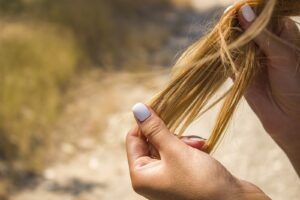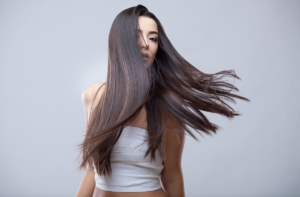Maintaining your human hair wig is essential for preserving its natural appearance and extending its lifespan. This guide from Eldorado provides a detailed overview of washing and maintaining your human hair wig so you can keep it looking its best.
Why Proper Wig Care Matters
Human hair wigs offer a realistic look and versatile styling options. However, without proper maintenance, they can become dull, tangled, or damaged. Regular washing removes buildup from products, sweat, and environmental pollutants, preserving the wig’s quality and appearance.
How Often Should You Wash Your Human Hair Wig?
Here’s a general guideline:
- Daily wear with styling products: Wash every 7–10 days. Product buildup can cause hair to clump, dull, and become harder to manage, so regular cleansing is necessary to maintain a soft and natural look.
- Occasional wear without heavy products: Wash every 2–3 weeks. Less frequent use allows for longer intervals between washes, as long as the wig is stored properly in a clean, dry space.
It’s important to strike a balance. Washing too often can strip the wig of its natural moisture and cause the strands to become dry, brittle, and prone to breakage—especially since human hair wigs no longer receive nutrients from the scalp. On the other hand, not washing enough allows dirt, sweat, and product residue to build up, which can lead to an unpleasant odor and make the wig harder to style or detangle.
Step-by-Step Guide: Washing Your Human Hair Wig
1. Detangle Gently
Before washing, use a wide-tooth comb to gently detangle the wig, starting from the ends and working up to the roots. This prevents breakage and matting.
2. Prepare a Wash Basin
Fill a basin with lukewarm water. Avoid hot water, as it can damage the hair fibers.
3. Shampoo
Add a small amount of sulfate-free shampoo to the basin of lukewarm water. Immerse the wig and gently swish it around using your fingers to distribute the shampoo evenly. Be gentle—avoid scrubbing, rubbing, or twisting the hair, as this can cause tangling or damage to the delicate strands and the lace base.
Using a shampoo specifically formulated for human hair wigs or color-treated hair is crucial. These shampoos are typically more hydrating and less harsh than regular shampoos, which helps preserve the wig’s natural softness and longevity.
Recommended Shampoos for Human Hair Wigs:
- Brandywine Non-Static Wig Shampoo – A go-to for wig wearers, this shampoo is gentle, helps eliminate static, and leaves hair soft and clean.
- SheaMoisture Raw Shea Butter Moisture Retention Shampoo – Sulfate-free and rich in nourishing ingredients like argan oil and shea butter, this is a great option for those looking to maintain moisture and softness.
- Jon Renau Argan Smooth Luxury Shampoo – Formulated especially for human hair wigs and toppers, this product gently cleanses while infusing moisture and shine.
For the best results, use only a dime-sized amount of shampoo, especially for shorter wigs or those that aren’t heavily soiled. Remember: too much product can be difficult to rinse out and may leave residue that weighs the wig down.
4. Rinse
Once you’ve gently cleansed the wig in shampoo, it’s time to rinse thoroughly. Hold the wig under cool to lukewarm running water and allow the water to flow in the same direction as the hair—from the roots to the tips. This helps prevent tangling and ensures the strands stay aligned.
Use your fingers to gently part the hair as the water runs through it. Continue rinsing until all of the shampoo is completely removed. Residual shampoo can cause dryness or dullness, so take your time here. You’ll know the shampoo is fully rinsed when the water runs clear and the hair feels clean but not slippery.
5. Condition
Conditioning is a vital step that restores softness, moisture, and manageability to your human hair wig. After rinsing out the shampoo, gently squeeze out any excess water (don’t wring or twist). Then apply a moisturizing conditioner, concentrating on the mid-lengths and ends where the hair is most prone to dryness and damage. Avoid applying conditioner directly to the cap or roots, as it may loosen the hand-tied knots and shorten the lifespan of the wig.
Leave the conditioner in for 2 to 5 minutes depending on the product’s instructions and how dry the wig feels. During this time, you can use your fingers or a wide-tooth comb to gently detangle the strands while the conditioner softens the hair.
Recommended Conditioners for Human Hair Wigs:
- Brandywine Revitalizing Conditioner
A classic wig-care staple, this lightweight conditioner enhances softness and reduces static while maintaining the wig’s natural shine. - Moroccanoil Moisture Repair Conditioner
Infused with argan oil and keratin, it’s ideal for dry or chemically treated human hair wigs that need hydration and strength. - Design Essentials Almond & Avocado Moisturizing Conditioner
Great for detangling and softening coarser or curly-textured wigs. It contains nourishing botanical extracts and vitamin E. - Jon Renau Argan Smooth Conditioner
Designed specifically for human hair wigs and toppers, it helps restore silkiness and protects hair from daily stress and styling.
Use sparingly, and always rinse thoroughly to avoid product buildup that can weigh the wig down or leave it looking greasy.
6. Final Rinse
After the conditioner has had time to work its magic, rinse the wig again under cool running water. As before, let the water run in a downward motion from root to tip. This not only helps remove every trace of conditioner but also smooths the hair cuticle, leaving the strands shiny and more resistant to tangling.
Make sure there’s no slippery residue left—over-conditioning can lead to limp, flat-looking hair that’s harder to style. Gently squeeze out excess water (without twisting the wig), and your wig will be ready for towel blotting and air drying.
7. Drying
Gently blot the wig with a towel to remove excess water. Place it on a wig stand to air dry. Avoid using a hairdryer, as excessive heat can damage the hair.
Additional Care Tips
Proper wig care doesn’t end with washing. How you store, style, and handle your human hair wig in between wears plays a major role in preserving its quality, especially for those living in Baltimore or the D.C. metro area, where seasonal humidity and heat can affect hair texture and moisture retention. Below are essential care habits to keep your wig looking and feeling like new:
Storage
Always store your wig on a wig stand, mannequin head, or wig hanger when not in use. This helps maintain the wig’s natural shape and prevents creasing, flattening, or tangling.
Keep your wig in a cool, dry place away from direct sunlight or heat sources such as radiators, windows, or stoves—prolonged exposure to UV rays can cause fading, dryness, and brittleness over time. For travel or temporary storage, use a satin or silk-lined bag to protect the fibers.
Tip: If you wear your wig daily, let it “breathe” overnight on a ventilated wig stand to reduce moisture buildup from sweat or humidity.
Styling
Human hair wigs can be styled similarly to natural hair—but that doesn’t mean they’re immune to damage. Use heat styling tools (blow dryers, curling irons, straighteners) sparingly and never without a heat protectant spray. Over time, frequent heat exposure can lead to dryness, split ends, and reduced shine.
Avoid backcombing, teasing, or harsh brushing, as these actions can stress the individual strands and weaken the lace or cap structure. If you want a specific style to last (like curls or waves), consider using soft rollers or pin curls overnight instead of applying heat daily.
Pro tip: Let your wig air-dry into its natural shape as often as possible, and only use heated tools for special occasions.
Products
Not all hair care products are wig-friendly. Many commercial shampoos, conditioners, and styling sprays contain harsh sulfates, parabens, or alcohols that can strip moisture and cause frizz or buildup. To keep your wig soft, shiny, and manageable, opt for products specifically formulated for human hair wigs, color-treated hair, or sulfate-free alternatives.
Look for lightweight leave-in conditioners, hydrating serums, or argan oil-based treatments to add shine without weighing the hair down. Avoid heavy oils and silicones, which can be difficult to remove and may cause residue buildup over time—leading to tangling and a greasy appearance.
Conclusion
Properly washing and maintaining your human hair wig isn’t just about aesthetics; it’s about protecting your investment, ensuring daily comfort, and feeling confident every time you wear it. Human hair wigs, when cared for correctly, can last well over a year while continuing to look fresh, natural, and vibrant. From gentle shampooing to using the right conditioners and styling tools, every step you take makes a difference in the health and appearance of your wig.
By following the detailed care routine outlined above—detangling, washing, conditioning, and storing your wig properly—you’ll keep it soft, manageable, and free from damage. You’ll also reduce the frequency of costly salon visits or replacements, allowing you to enjoy your favorite styles for longer. Whether you wear your wig for fashion, medical reasons, or hair loss, consistent care empowers you to look and feel your best.
Contact Us
If you’re located in Baltimore, Maryland, or the Washington, D.C. area and are looking for expert advice, premium human hair wigs, or professional wig maintenance services, we’re here to help. At Eldorado Hair Replacement in Baltimore, we specialize in hair replacement solutions tailored to your lifestyle and needs. Whether you need a custom wig fitting, professional cleaning, or guidance on choosing the right hair care products, our experienced team is just a call or visit away. Visit us in Baltimore, contact us online, or book your free hair analysis now.





